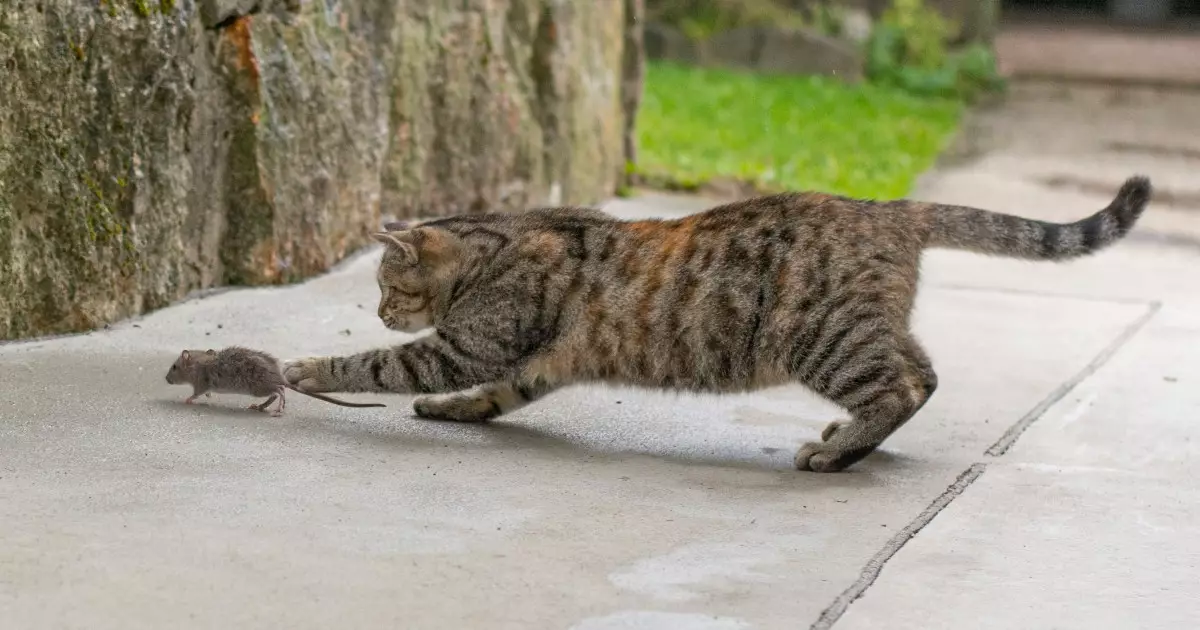Cats have long been revered in human history, initially valued for their hunting prowess, particularly their ability to control rodent populations threatening stored grain. This utilitarian relationship transformed over the centuries, as humans started to appreciate cats not only as pest controllers but also as companions. The domestication of cats brought about significant behavioral changes, leading to a distinct shift from active hunters to more social and less predatory animals. Today, the journey of a cat from a grain protector to a household companion raises intriguing questions about the preservation of instinctual behaviors and the search for cats that retain their predatory skills.
While specific breeds are often cited for their hunting capabilities, it has become apparent that a cat’s temperament and upbringing may hold more weight in defining its hunting skills. Breeds like the Maine Coon, once celebrated for their ability to catch mice, have become more docile through generations of selective breeding. Similarly, breeds such as Persians and Ragdolls have been characterized by their relaxed nature, rendering them less suited for traditional hunting tasks.
However, breeds known for their hunting instincts, such as the American Shorthair or the British Shorthair, do exist—but owning a cat that can effectively hunt is more about individual personality than genetic predisposition. Even within traditionally non-hunting breeds, adopting a cat with a curious, active nature could yield a surprisingly effective mouser. Observations indicate that shelter cats often excel in their hunting abilities, suggesting that the way they were raised could play a more crucial role in their hunting proficiency than their breed alone.
Identifying a potential mouser isn’t simply a matter of breed; it frequently involves observing specific behaviors. Cats that exhibit a tendency to play with or carry toys as though they were prey may possess this intrinsic hunting instinct. Their playfulness often mimics natural hunting behaviors, revealing an interest that could translate successfully into actual hunting.
It’s essential to note that persistence can sometimes indicate a cat’s hunting suitability. An ideal mouser is playful yet knows when to abandon a fruitless chase, demonstrating a balance in hunting behavior that reflects natural instincts. Additionally, factors such as age and gender may influence a cat’s hunting capabilities, with older cats often possessing more experience than exuberant kittens.
Once a potential mouser has been identified, certain steps can ensure they remain effective hunters. A well-fed cat, for instance, is more likely to hunt out of instinct rather than necessity. Therefore, ensuring adequate nutrition while maintaining an environment conducive to exploration and play will foster their innate behaviors and hunting skills.
Moreover, adopting a feral or semi-feral cat for outdoor mouse control can be a practical solution. While they may not be cuddly companions, these cats are hardwired for hunting and can significantly deter rodent populations in barns and backyards. However, caution should be taken: adopting a cat solely for pest control can lead to neglect of the animal’s companionship needs.
For those fortunate enough to have a cat with renowned hunting skills, continuous monitoring of their health is paramount. Cats engaging with the natural environment are at an increased risk for various parasites and diseases. Regular veterinary check-ups, preventive treatments, and understanding local health concerns are necessary to maintain the well-being of these agile hunters.
Furthermore, rewarding cats for their successful hunts can create positive reinforcement. While it may be unpleasant to clean up after a hunter’s “gifts”, recognizing these actions as part of their nature fosters a healthier human-feline relationship.
Though the modern cat may have drifted far from their origins as relentless hunters, there remains a complex interplay between domestication and their instinctual behaviors. As loving companions, cats enrich our lives, and discovering a feline that retains the essence of a traditional mouser enhances that bond. The pursuit of finding a cat with those generational instincts requires a multifaceted approach—one that embraces understanding, patience, and, above all, appreciation for the remarkable journey from ancient hunter to modern companion.


Leave a Reply